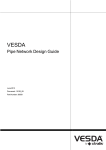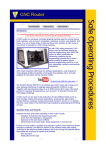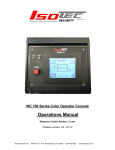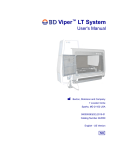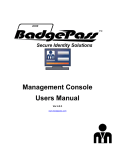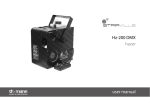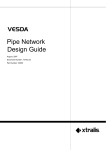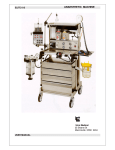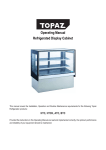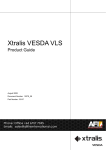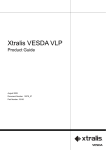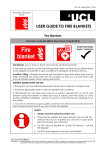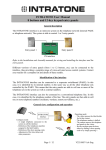Download Fire Hazards in Workplaces Fire is an emergency that requires a
Transcript
Introduction | Fire Hazards | Fire Safety Equipment | Emergency Response Fire Hazards in Workplaces Fire is an emergency that requires a rapid response. A fire can quickly become uncontrollable. A quick response might prevent major damage and loss of property, however unnecessary risks should not be taken. The alarm should be raised according to workplace procedure and others at the workplace should be warned and evacuated. Many workplaces have one or more designated fire wardens to take control if a fire occurs. There are many hazards in a workplace which may cause fire, including: hot work creating sparks and molten metal from cutting torches and grinders poorly maintained plant including mechanical or gas equipment spills of flammable, combustible materials like petrol and thinners excess combustible dust or vapours being ignited by spark or flame electrical malfunctions, wiring faults or overloaded temporary circuits storage of incompatible materials such as paper packaging close to hot work processes overheated plant or machinery. flammable containers such as gas bottles like (LPG), stored inside enclosed metal toolboxes or other unventilated stores which may result in an explosion and fire smoking in areas where flammable or volatile materials are present refuelling plant with the motor running areas where volatile chemicals such as two part paints or glues are being applied inadequate emergency management procedures and fire fighting equipment. e.g. poorly maintained fire extinguishers, blocked or obstructed fire exits, non-functioning smoke detectors Inadequate emergency training such as the correct use of fire fighting equipment, hose reels, extinguishers, first aid and rescue techniques Fire risks at workplaces can be greatly reduced and avoided by careful planning. Fire hazards can be reduced by: regularly removing accumulated waste materials and dust ensuring work activities are appropriately supervised working safely - do not conduct 'hot work' near chemicals properly using and maintaining plant safe management and storage of flammable materials personnel being well-informed, appropriately trained and follow established risk management plans using and obeying appropriate warning signs not smoking in areas other than those designated for smoking regularly inspecting electrical equipment Why do fires start? Fire results when four elements needed to support combustion – heat, oxygen, fuel and chemical reaction are present. 1. 2. 3. 4. Enough Oxygen to sustain combustion Enough Heat to reach ignition temperature Some Fuel or combustible material The chemical reaction that is fire Copyright 2011 - OnGuard Safety Training Pty Ltd 1 of 11 Removing any one of the four elements means that combustion can no longer be supported and the fire can be extinguished. Methods of removal involve one or more of the following: Starvation - removing the source of fuel (eg turn off the gas at source) Smothering - the removal of oxygen (eg use fire blanket) Cooling down - to below ignition level (eg use correct extinguisher for hot metal) Disabled MP3 player Fire Classification There are a number of types of portable fire extinguishers available in Australia. Each type of extinguisher may be rated for one or more classes of fire. In some cases, particular extinguishers are not only considered ineffective against certain classes of fire, they can be dangerous if used in those circumstances. The classes of fire are: CLASS A - Ordinary Combustibles (paper, Wood, Cardboard. CLASS B - Flammable and combustible liquids (methylated spirits) CLASS C - Flammable gases (LPG, hydrogen) CLASS D - Combustible metals CLASS E - Electrically energised equipment CLASS F - Cooking oils and fats FPA Factsheet - Fire Extinguishers - Types & Uses >>> Disabled MP3 player Top Fire Safety Equipment Fire safety equipment must be available at every workplace and must be kept in Copyright 2011 - OnGuard Safety Training Pty Ltd 2 of 11 good working order. Work vehicles such as builders’ utilities, work vans and delivery trucks should also be equipped with small CO2 fire extinguishers. Fire safety equipment includes: Fire extinguishers Fire blankets (used for small domestic fires or to wrap around a person whose clothes have caught alight) Hose reels and fire mains Signage Breathing apparatus (used by rescue workers and fire-fighters) Fire extinguishers Portable fire extinguishers can save lives and property by putting out or containing fires within the capability of the extinguisher. However, they must be of the correct type for the particular fire, and they must be used correctly. Some fire extinguishers can be dangerous if used on the wrong kind of fire. Different kinds of portable fire extinguishers are distinguishable by their labels and their colour. The standard colours of some portable fire extinguishers were changed in 1999 so you may see the same type of extinguisher in different colours. Type of extinguisher Colour Water Used for fires involving Dangerous if used for Combustible items such as wood, Electrically energised paper, textiles, plastics and equipment, oils and fats general rubbish. Red Combustible items and flammable Electrically energised liquids such as oil, paint, petrol, equipment solvents, glue, waterproofing materials. Foam Red with blue band or label CO2 Red with a black band or label Electrically energised equipment such as switchboards and electric appliances and motors. Limited effectiveness on combustibles, flammable liquids, oils and fats. Flammable liquids and energised electrical equipment. Powder (different kinds are available) Red with a white band or label Vaporising liquid Combustibles and electrically energised equipment. Red with yellow band or label Copyright 2011 - OnGuard Safety Training Pty Ltd 3 of 11 Combustibles and cooking oils and Electrically energised fats. equipment Wet chemical Red with oatmeal coloured band or label Portable fire extinguishers need to be readily available, very visible and provided in sufficient numbers. Guidelines to provide minimum protection for given areas are set out in Australian Standard AS 2444. The best placement of fire extinguishers can be achieved by carrying out a physical assessment of the areas to be protected. Extinguishers should be: located uniformly and consistently across the site easily accessible close to major access away from potential physical damage eg being knocked by people passing. In a work truck for example, the extinguisher should be in a location where the driver can reach it from the driver’s seat or outside the cabin. Used extinguishers must be refilled and replaced as soon as possible. Extinguishers must also be checked and recharged on a regular basis in accordance with the guidelines on the extinguisher. Placement of Extinguishers Extinguishers should be placed near to where they may be used. However, they should not be so close that a fire will prevent you from reaching the extinguisher. In most buildings it is a requirement that extinguishers be clearly visible with an approved indicator sign placed above or contained in a clearly labeled cupboard. Maintenance Fire Extinguishers are serviced every six months as per AS1851-2005. They are checked to make sure they are charged and nothing is missing on them. You can check the yellow metal tag on your extinguisher to see when it was last serviced. It is essential that you understand your device well and also read the user manual completely to check everything about maintenance. Checks should be made that all fire devices and fire extinguishers are in proper working condition. Most varieties of chemical fire extinguishers contain a number of chemicals inside the canister. This requires an occasional shaking, because otherwise some heavier chemicals tend to settle down, thereby destroying the homogeneous mixture and this can greatly reduce efficiency. These fire extinguishers require regular shaking, typically once a month. Always ensure easy accessibility to fire extinguishers. This is very important because if they aren’t accessible in the time of emergency, then there is no use having them in the first Copyright 2011 - OnGuard Safety Training Pty Ltd 4 of 11 place. Checks should be made for leaks, dents, rust and wear and tear. Ensure that seals and pins are unbroken. Fire blankets Fire blankets are used for small fires such as cooking fat fires. Use of a fire blanket can be an effective method of extinguishing a fire before it spreads. Fire blankets are especially effective when a person's clothes have caught on fire. Fire blankets can only be used once so be sure to have your fire blankets replaced regularly after each use. Fire blankets work by cutting of the oxygen supply of class F fires (oils and fats) eventually smothering them. Fire blankets should be Australian Standards approved. Requirements for the maintenance of fire blankets manufactured are to comply with AS/NZ 3504 and installed in accordance with AS 2444 and they must measure not less than 1 metre by 1 metre. Fire blankets shall be inspected 6-monthly or when defects are suspected. Blankets that have been used on a fire shall be condemned. Fire hydrants and Hose reels The fire hydrant shall be installed to satisfy clause E 1.3 of the Building Code of Australia, AS 2419, AS 3500 and the local fire brigade requirements. Fire hydrants are located in fire stairs throughout buildings to provide effective coverage for fire fighting operations. The continuous flow hose reel is a one man operation which allows immediate and continuous flow of water at all times during deployment of hose. The reel is furnished with heavy duty quick acting ball valve and nozzle. Fire hose reels shall be installed to satisfy clause E 1.4 of the Building Code of Australia, AS 2441, AS 3500 and local government requirements. Fire hose reels are located adjacent to fire stairs. Copyright 2011 - OnGuard Safety Training Pty Ltd 5 of 11 Fire Sprinkler Systems Fire sprinkler systems are used to extinguish accidental fires quickly, so that they do not spread and become big and out of control. Thus fire sprinkler systems are like a prevention system that can be very effective in bringing smaller fires under control immediately. There are a variety of fire sprinkler systems depending on the place of installation, area of protection, type of fires possible, cost, efficiency, etc. All these factors need to be considered while choosing the right fire sprinkler for your needs. The use of fire sprinkler systems has been common in commercial buildings, gas stations, etc. for quite some time now, but an increasing number of residential complexes, independent houses, schools, etc. are using these systems to increase the safety of the residents. Signage Australian Standard AS 1319-1994 sets forth design and use standards for safety signs used in the occupational environment. Employers must use safety signs wherever there is a risk to health and safety which cannot be controlled by other means Safety signs must be of a specified type All signs must contain a pictogram Signs must be properly maintained and adequately lit Employers must ensure that signs are understood by employees Breathing apparatus This equipment is used by rescue workers and fire-fighters. Copyright 2011 - OnGuard Safety Training Pty Ltd 6 of 11 Emergency Lighting Emergency lighting is an integral part of a fire alarm system that is used to avert any disaster caused by fires. Fire alarms and emergency lighting go hand in hand while dealing with a situation. The fire alarm is used to provide auditory stimulus to alert the people that there is a fire. The emergency lighting is used to give a visual aid for people to tell them about the fire. The emergency lighting is used to alert the people in the building, home or office that there is a fire by using bright colored sirens similar to the police or ambulance sirens. Emergency lighting systems also provide for visual clue to the fire for those people who are unable to hear properly. Complementing this, for those who cannot see properly, the fire alarm provides auditory signal to alert them of the fire. Therefore fire alarms and emergency lighting systems together must be used to prevent any serious damage especially to life in case of a fire. Emergency lighting system can also direct the people towards safety to the nearest exit from the building. Smoke Detectors Many people are familiar with smoke detectors and their sounds (high pitch beep beep). These fire alarm systems detect the presence of fire and raise an alarm to alert you of the same. It works via many ways, mainly tracking heat and smoke that is typically associated with any fire. Heat sensors and smoke detectors are thus central to most fire alarm systems in the home and workplace. Fire Alarm Systems Fire alarm systems are designed to provide automatic notification of the presence of fire (by detecting heat or smoke) in the building. It is made up of fire detectors positioned throughout the building and wired to the fire indicator panel and fire bell. When a detector is activated, its location is shown on the fire indicator panel, Copyright 2011 - OnGuard Safety Training Pty Ltd 7 of 11 the fire bell commences to ring continuously, a signal is sent automatically to the fire brigade, and the emergency warning system is started in the ALERT mode. The fire alarm system can be manually activated using the break-glass switch adjacent to the fire indicator panel. Emergency warning systems provides an audible signal throughout buildings to warn occupants of a fire or other emergency situation. The ALERT signal (usually a repetitive, interrupted sound - such as an electric bell). It can be sounded automatically on actuation of fire detectors or in some workplaces the alarm can be manually activated by a person, after the fire has been identified and the alarm has been raised. The ALERT signal can also be used in a different configuration (eg a whoop whoop horn sound) in other emergency situations such as evacuation and lockdowns. How to 'raise the alarm' A combination of modern building design and modern fire alarm systems means that the safe managed evacuation of buildings in an emergency can be achieved without putting anyone in danger. The majority of buildings have modern fire alarm systems, which include automatic fire/smoke detectors, and have fire panels that provide detailed information about where the source of the alarm is. Should a fire start, it will be detected at a very early stage thereby allowing an evacuation plan to be implemented before the fire develops. If you notice a fire you should immediately 'raise the alarm'. There are a number of ways to do this - depending on your circumstance: 1. verbally: SHOUT - FIRE, FIRE, FIRE 2. remotely: use a telephone to call your workplace emergency number usually the main switchboard - advise the location and nature of the fire. 3. manually: breaking the glass at the nearest manual fire alarm call point - if installed at your workplace. 4. automatically: The alarm is sounded automatically on actuation of fire detectors - if installed at your workplace. It is important that you know what fire alarm systems are in place at your workplace. Emergency Evacuation Plans The PCBU ( Person Conducting a Business or Undertaking) has an obligation to provide emergency procedures information to all staff, visitors, volunteers, contractors etc, entering onto the workplace. Such information will aid in the evacuation of the workplace and the identification of any other hazards, if required. The emergency evacuation plans and diagrams show evacuation routes, the location of fire fighting equipment and other significant information. In the event of an emergency you are to follow these directions to assist with the safe exit from the building, and the organised assembly at the nominated assembly point. Copyright 2011 - OnGuard Safety Training Pty Ltd 8 of 11 Other emergency signs can be posted dependent upon the workplace requirements. These signs could be located at common areas such as entrances, lobbies/ foyers, fire exits and conference rooms, as well as in the workshop and other work areas. Disabled MP3 player Top Fire Emergency Response Fire is an emergency. As with any emergency, you should follow the emergency procedures established for your work site. Remember to K R O: Keep calm (K) Raise the alarm (R) Obtain help (O) The need for evacuation should be based on a number of factors including: perceived level of risk from information gained from the threat risks associated with not evacuating - smoke levels, opportunity to exit in the immediate future, fire, oxygen and visibility any current circumstances which may add to the risk factor established fire safety management plans In the event of a fire at your workplace follow the instructions of fire wardens or others with the authority to take control. First response firefighting is a specialist skill. Do not attempt to fight a fire unless you have been trained and are confident to do so. Fighting a Fire Before you even consider fighting a fire, you must ensure that all persons in the area are alerted and have left or are leaving the building, and ensure that someone calls administration so that they can contact the Fire Brigade. The first question you must then ask yourself is whether or not you should fight a fire at all. Children MUST not attempt to fight a fire. In most cases, a portable fire extinguisher only offers sufficient fire fighting agent to fight a relatively small fire. It may be more effective and safer to leave the fire to the Fire Brigade. If you leave a fire, close off the area as you go. If you do propose to fight a fire remember the "PASS" word. Copyright 2011 - OnGuard Safety Training Pty Ltd 9 of 11 Top Disabled MP3 player How to use a Fire Extinguisher Pull the pin This will allow you to discharge the extinguisher. Aim at the base of the fire Hit the fuel..if you aim at the flames, the extinguishing agent will pass right through and do no good. Squeeze the top handle This depresses a button that releases the pressurised extinguisher agent. Sweep from side to side until the fire is completely out. Start using the extinguisher from a safe distance away and then slowly move forward. Once the fire is out, keep an eye on the area in case it re-ignites. Copyright 2011 - OnGuard Safety Training Pty Ltd 10 of 11 Disabled MP3 player Copyright 2011 - OnGuard Safety Training Pty Ltd Top © Copyright 2011 - OnGuard Safety Training Pty Ltd - Australia Latest Revision Date: 07/ 01/ 2011 11 of 11














